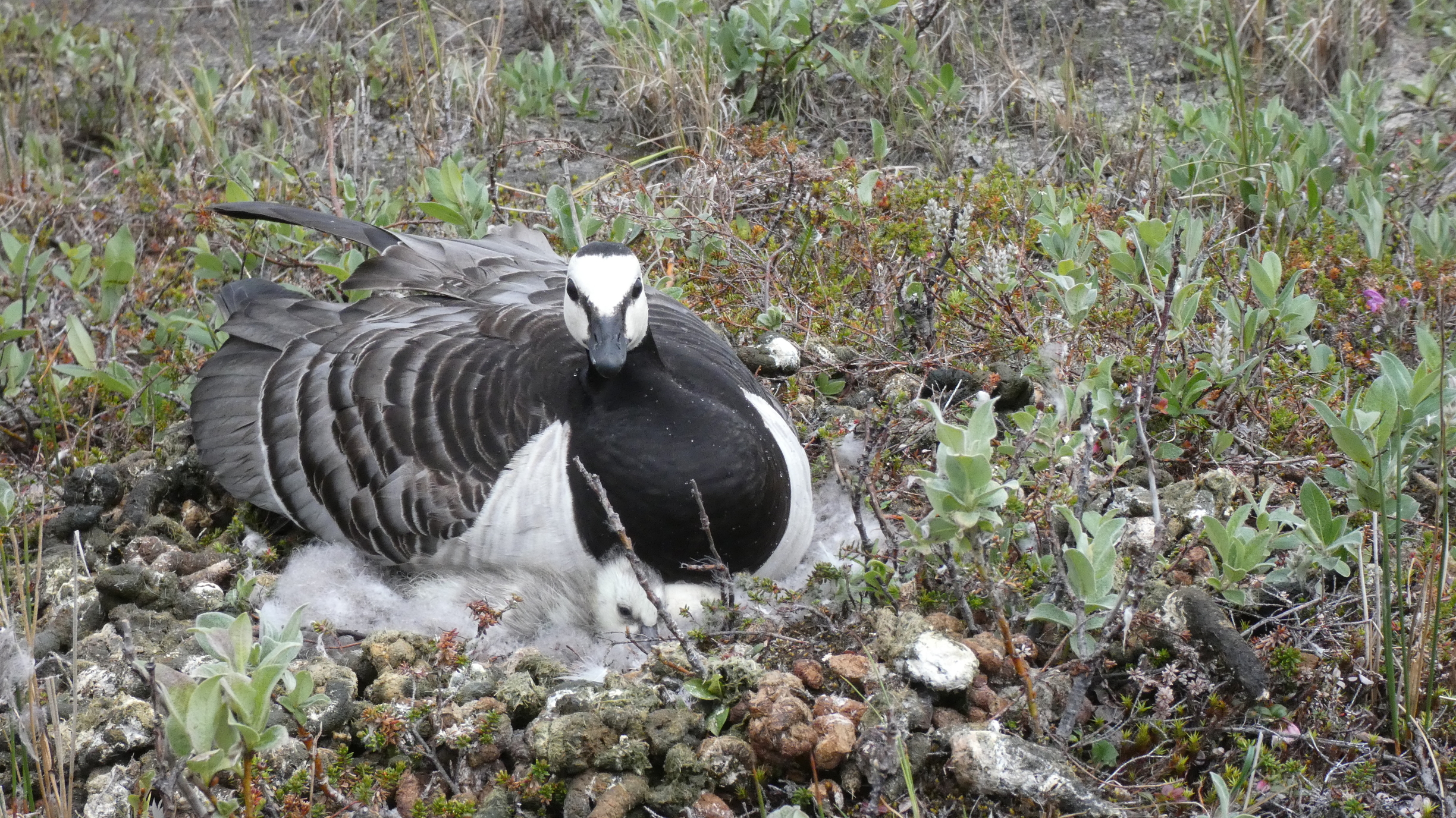By Michiel Boom
Linked paper: Contrasting effects of the onset of spring on reproductive success of Arctic-nesting geese by B.A. Nolet, K.H.T. Schreven, M.P. Boom, and T.K. Lameris, The Auk: Ornithological Advances.
Global warming is increasingly affecting wild bird populations, and because the Arctic is warming more rapidly than any other part of the world, populations of Arctic migratory birds are potentially the most vulnerable. Every year, several goose species are among the birds that fly long distances from their wintering grounds to the Arctic to benefit from the productive growing season, relatively low predation rates, and reduced competition. However, the breeding season in the Arctic is short, with the onset of spring determined by the timing of snowmelt.

Researchers have observed that the breeding output of different goose species correlates with the onset of spring, but this correlation is not the same for all species. Most, including the Pink-footed Goose, Barnacle Goose, dark-bellied Brant, and Snow Goose, do better when spring is early, but at least one goose population does worse—the light-bellied Brant population that breeds on Svalbard. Based on the available literature on Arctic-breeding geese, we argue that this paradox may exist because the timing of spring has different effects on two stages of the breeding cycle: on one hand, the pre-laying, laying, and nesting phase, and on the other hand the hatchling, fledgling, and juvenile phase. The ecology of a species determines to which effects it is more susceptible.
In an increasingly warming Arctic, the snow melts earlier and spring begins sooner. This earlier spring has several positive effects in the first stage of the breeding cycle (pre-laying, laying, and nesting). When snow melts earlier, more geese initiate a nest, their clutch size is larger, and the chance that the eggs will hatch increases. However, the second stage (hatchling, fledgling, and juvenile) is negatively affected by earlier springs, because food quality is already declining by the time the eggs hatch. This is called a trophic mismatch. For Arctic-breeding geese, timing is of the essence, and the hatching of the goslings should coincide with the start of vegetation growth. With increasingly earlier springs, geese arrive too late in the season and may not be able to initiate breeding in time to ensure that the goslings hatch when the nutrient concentration in their food plants peaks. This results in slower growth for the goslings, reduced body condition, and ultimately a decrease in juvenile survival.
To understand the impact of a warming climate on Arctic-breeding geese and to make future predictions about their productivity and population dynamics, we believe it is essential to understand the underlying mechanisms that determine breeding output. As warming continues, the negative impacts of an earlier spring might outweigh the positive effects, even for the species that are currently benefiting.
